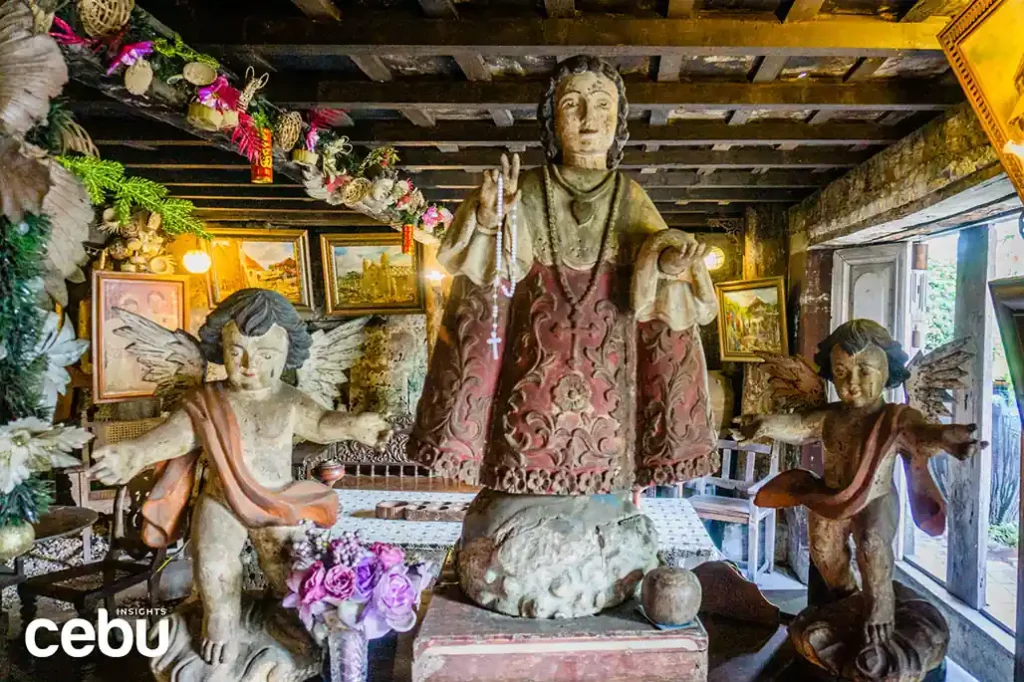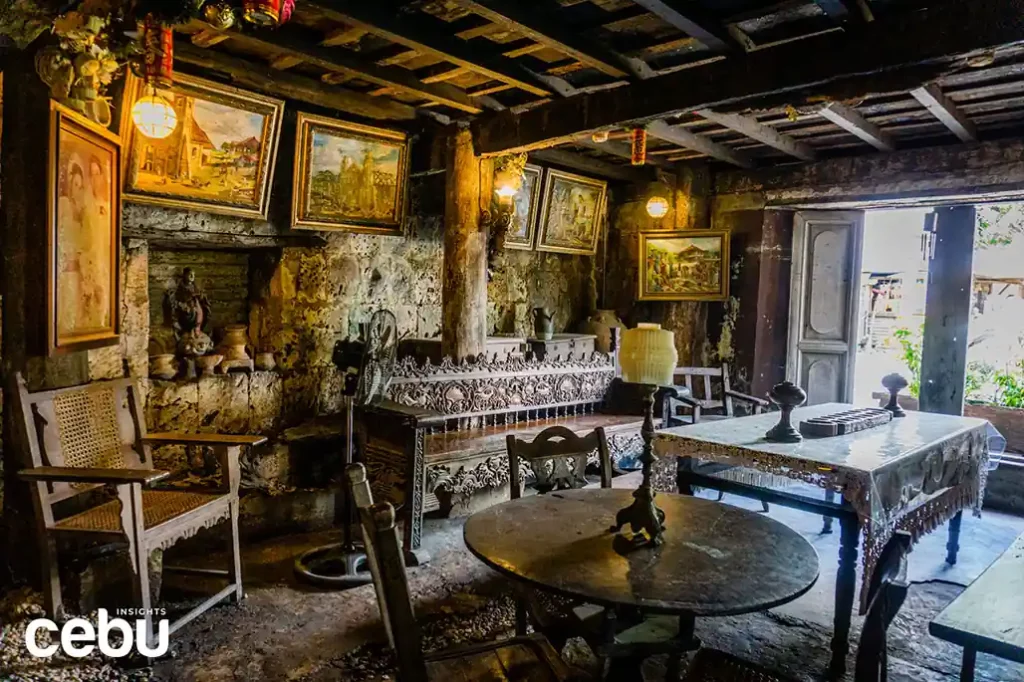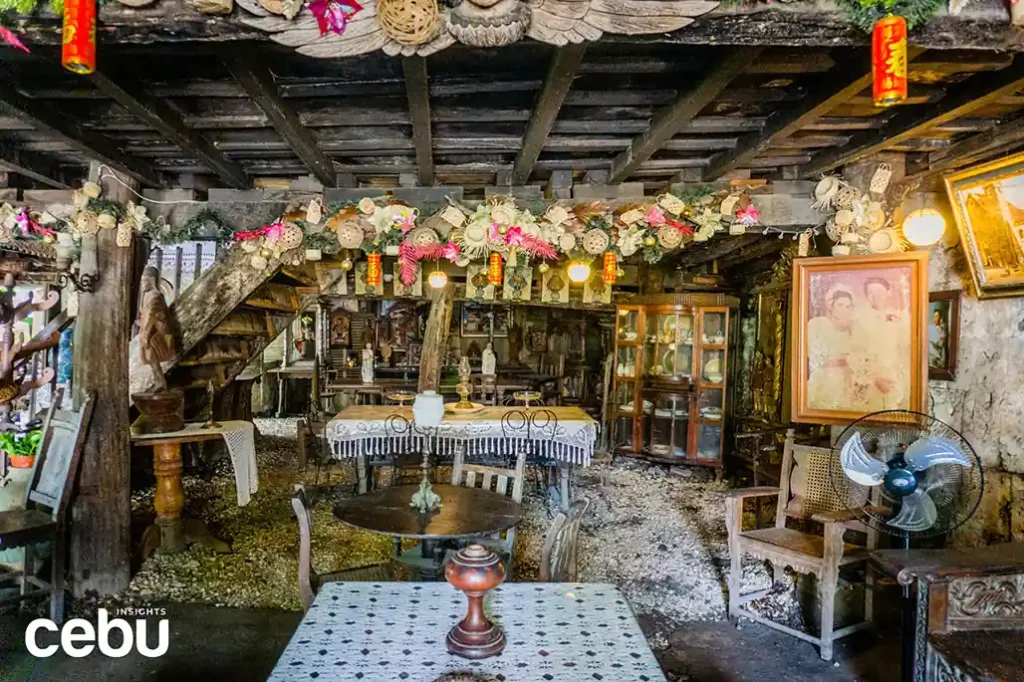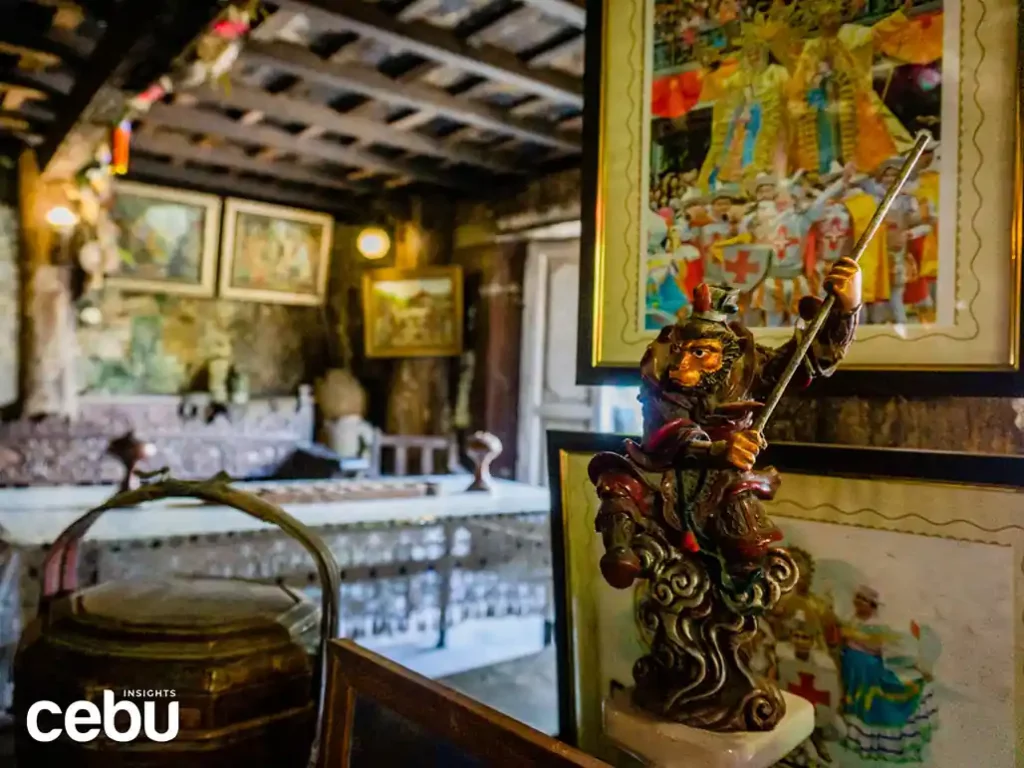Cebu’s first ancestral house, Yap-Sandiego Ancestral House, has been in Parian for more than three centuries.
The Parian district played a crucial part in the history of Cebu City. This quiet neighborhood was once a center for trading and bartering before turning into a residential area for Chinese settlers in the 1600s.
Today, Parian has several historic sites, including the Parian monument, the Jesuit House Museum, and the Yap-Sandiego Ancestral House.
The Yap-Sandiego Ancestral House is the oldest ancestral house in Cebu. It was built near Colon, the oldest street in the Philippines between 1675 and 1700. And it was first owned by a Chinese trader, Don Juan Yap, and his wife, Doña Maria Florido.
It is also known as the “Balay nga Bato og Kahoy” (which translates to “house of rock and wood”) because it was constructed from coral stone and wood. Its wooden floors and open windows are reminiscent of a bygone era you could only experience if you tried to live in provincial towns.
Nonetheless, it survived many natural disasters and never experienced massive damage for almost 350 years.
Yap-Sandiego Ancestral House is located in Parian, a trading center that was pivotal in the history of Cebu City.
It is currently under the management of Don Juan’s great-great-grandson, Val Mancao Sandiego, who is an art collector and a Sinulog dance choreographer. Furthermore, it is now a private museum that showcases vintage antiques, such as religious images, statues, and household goods from the Spanish colonial period.
On the first floor, you can see figurines of Santo Niño (Holy Child) and other Roman Catholic saints, well-preserved paintings, and portraits of Don Juan Yap and Doña Maria Florido.
Also, there are three dining tables wherein one of them with a sungka, the Filipino version of the mancala game, placed in the middle.
Yap-Sandiego Ancestral House has several statues, portraits, paintings, and household goods.
One notable piece you might find is the statue of one of the most prominent figures in Chinese mythology—Sun Wukong the Monkey King.
A statue of the Monkey King, Sun Wukong, is one of the vintage antiques found in Yap-Sandiego Ancestral House.
The items on the second floor represent the lifestyle of the Cebuanos during the Spanish colonial period. You can see several dining areas and a bedroom—the walls and beds have braided silk cloths commonly found in old-fashioned Filipino interior designs.
The items in Yap-Sandiego Ancestral House depict the Cebuano and Chinese lifestyle during the Spanish colonial period.
Lastly, you can surround yourself with tons of plants and get some fresh air in the outdoor area, and you might want to try your luck at wishing well.
The outdoor area is full of plants that give off a relaxing ambiance.
Yap-Sandiego Ancestral House offers a short but meaningful tour of the lives of Cebuanos and Chinese settlers before Cebu became a metro. It is not only accessible but also affordable, making it a sought-after tourist attraction.
Moreover, the Parian district becomes lively during the week leading to the third Sunday of January because of the Sinulog festival, an annual celebration that honors the feast of Santo Niño. And Val Sandiego’s dance troupe always performs for Sinulog right outside the Yap-Sandiego Ancestral House.
So, whether you are traveling around the world or you just want to learn more about the culture of Cebu, make sure you visit Yap-Sandiego Ancestral House—the oldest ancestral house in Cebu.
HOW TO GET TO THE ANCESTRAL HOUSE:
JEEPNEY
The Yap-Sandiego Ancestral House is very accessible since it is located near Colon.
If you are in Ayala Center Cebu, you can ride a jeepney that includes Parian in its route (e.g., jeepney route codes 13C or 62C). You can just tell the jeepney driver or conductor to drop you off at the Parian Fire Station or the Parian Monument. From there, you can immediately recognize the Yap-Sandiego Ancestral House.
Or, if you are in SM City Cebu, you can ride a jeepney or a multicab that includes Parian in its route (e.g., jeepney route codes 01K or 12G). Same as above, just tell the jeepney driver or conductor to drop you off at the Parian Fire Station or the Parian Monument.
However, jeepneys, especially multicabs, can either be scarce or always full. So, if you get unlucky with Cebu traffic, you can ride any jeepney that includes Colon in its route. This time, you tell the jeepney driver or conductor to drop you off at the Colon Obelisk (you cannot miss it since all jeepneys from Colon always pass by it). Then, you can just ask the locals where the ancestral house near the Parian Fire Station or the Parian Monument is—it is a one to two-minute walk from there.
Operating Hours:
Monday, Tuesday, Thursday, Friday, and Sunday – 8:00 AM – 8:00 PM
Wednesday – 9:00 AM – 7:00 PM
Saturday – 8:00 AM – 7:00 PM
Entrance Fee:
₱50 (roughly US$1)
Exact Location:
Corner of Mabini and Lopez-Jaena Street and behind the Parian Monument.












